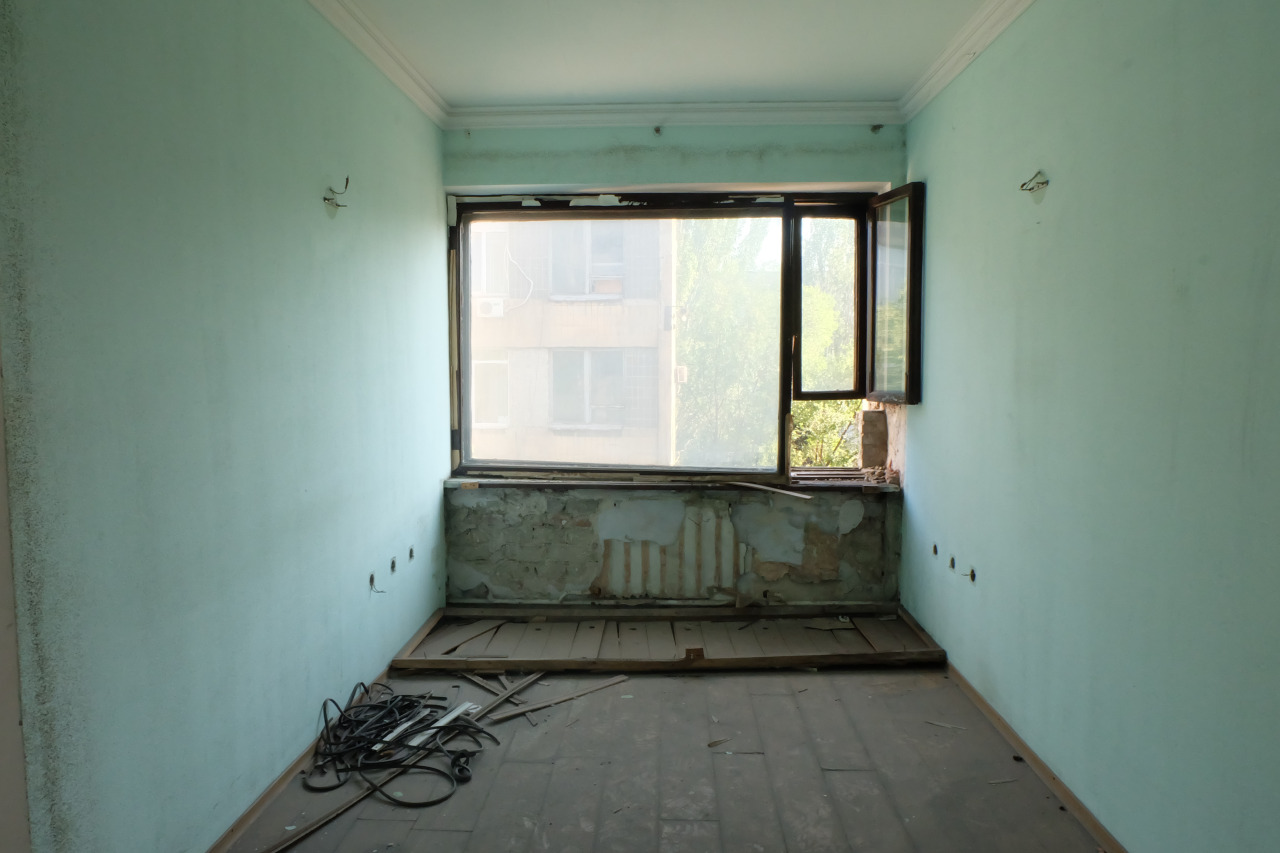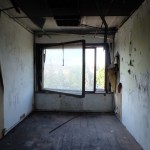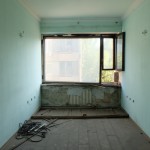10 rooms from the Mariupol city hall, the local dom sovietov which was bombed by the separatists of Donetsk People’s Republic last year.
This year is different, the blackened ruins are standing in the middle of the city in the peaceful summer silence, waiting for their uncertain future together with the citizens of mariupol.
The building has become a symbolic object in the city’s future trajectory: the debates surrounding its reconstructon point out the crucial dilemma of this place, namely, should we reproduce the soviet heritage or try to create something more fitting to our present? The municipality already took a side, deciding about the reconstruction of the building according to the original plans. this was challenged by local architects and activists who advocated for a public competition where everyone can share their vision about the optimal new form of the city hall.
Issues of transparency versus authority, agency, imagination and domination are not specific of the mariupol case. However, i feel that the stakes are higher here. While the shady post-transitional development of Budapest has given enough lessons to citizens how to negotiate about the fate of their environment, although most of the time without major success, here i feel a void. as my great architect colleague has shown, the number of new spatial developments in mariupol after 1990 is close to zero. to put it simply, international capital which smoothed away the holes in the postsocialist concrete of Budapest while ruining an impressive part of its unesco heritage and reorganizing its socio-spatial composition, simply avoided mariupol. This is why i can see my lovely benches here from 20 years ago, and this could be the reason behind the less heated public debate surrounding urban space. it seems that the war in Eastern Ukraine brought a new wave of discussion to Mariupol besides its horrible consequences: the destruction of old power structures refers to the physical level of dom sovietov, but also to the related structures of thinking. The ruins in the middle of the city stand there as a material exclamation to start thinking about the space in which we act and live, and question the established ways.
Regarding all these background notes, it felt really strange to walk through the abandoned office rooms, where the heart of local bureaucracy has been working since the 1960s. The rooms were uniform, distinguished only by the flower ornaments on the romantically outdated wallpapers; i walked into each with a feeling of unfounded triumph: whatever happens in these rooms in the future, and probably it won’t be of much more glory than the previous eras, still, it’s over, guys.



